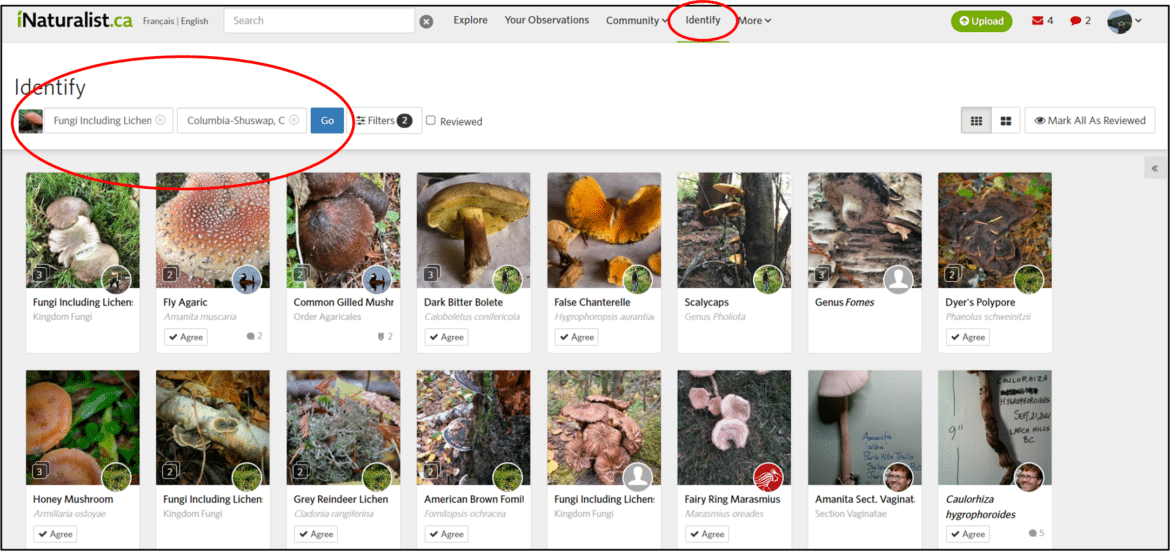By Lara Phillips | December 9, 2022
Community science is revolutionizing biodiversity data worldwide! That’s right – all those iNaturalist observations do make a difference and the scientific community has taken notice.
An article recently published in PLOS Biology recognized community science sourced biodiversity data as an important resource that can be used to guide high-level decision making. In recent decades, we have seen a massive increase in global biodiversity data, which is largely thanks to observations reported by regular folks and successful platforms like iNaturalist. While it’s safe to say we can pat ourselves on the back for all the observations we’ve made, there is one caveat we hope you’ll consider.
Did you know that your observations may be filtered out in scientific studies if they don’t obtain a ‘Research Grade’ label on iNaturalist? The Research Grade label is iNaturalist’s designation for species observations that have been identified, or confirmed as accurate, by two or more different users. Despite the rise in observers, the platform is struggling to reach its full potential without a considerable rise in identifiers. As of January 2022, iNaturalist had 2.5 million users and a staggering 92% of them are solely observers, meaning only 8% of users are verifying peoples’ reports. While it’s reasonable to assume that not every user has the expertise to make identifications, a larger issue may simply be a lack of participation with the online community. Regardless of the reason, the growing value of Research Grade observations signifies that new strategies are needed to promote identifiers on the platform.
Aside from making valuable contributions to global biodiversity data, there are other great reasons to become an identifier on iNaturalist. You could be contributing important data on threatened, data deficient or invasive species. Engaging with other users in identification discussions is also a wonderful way to expand your knowledge, and network with experts and other naturalists from around the globe. Plus, the more you learn, the more you can teach others and subsequently help other naturalists develop their identification skills and become confident identifiers themselves. The combined efforts of iNaturalist community members are directly responsible for producing Research Grade observations. The more users who participate in the ID process, the stronger, more knowledgeable and impactful the community.


Identifying observations on iNaturalist doesn’t need to be intimidating. A great first step is to start with what you know. Perhaps there’s one or two species you’re quite familiar with. Maybe you’re an avid birder or mushroom forager. You can adjust your ‘Identify’ page to specifically show the species or species groups you know best, so you don’t need to filter through hundreds of observations you aren’t comfortable identifying. You can also narrow the search to your city or region, so the observations are more likely to be things you’ve come across before.
Another useful tip that will assist other users to efficiently identify your personal observations, is to place them into categories like Kingdom, Family, or Genus. While you may not know what bird you photographed at your bird feeder, by categorizing your observation into the ‘Bird’ kingdom, it has a much better chance of being seen by other bird experts on iNaturalist in their filtered search. This expedites the identification process. You can increase your chances of obtaining Research Grade observations by ensuring your photos are high quality. Clear photos from different angles, that include habitat notes and accurate location, date and time all help to support the process.

How much time you spend identifying observations on iNaturalist is entirely up to you! Even a few minutes a day can make a substantial impact to biodiversity data worldwide. Be sure to check out ISCBC’s Observing and Reporting eLearning course if you need a quick refresher on how to use iNaturalist, and for specific information about becoming an identifier, iNaturalist has put together a simple step-by-step guide. With winter well on its way, ‘tis the season to take up a new indoor hobby – so go make yourself a hot beverage, settle into your favourite comfy chair and spend a little time identifying observations on iNaturalist.
Lara Phillips is a Special Projects Lead at ISCBC. An avid trail runner and backcountry enthusiast, she feels most at home amongst nature and cares deeply about protecting BC’s diverse ecosystems. You can reach Lara at lphillips@bcinvasives.ca.
Share





